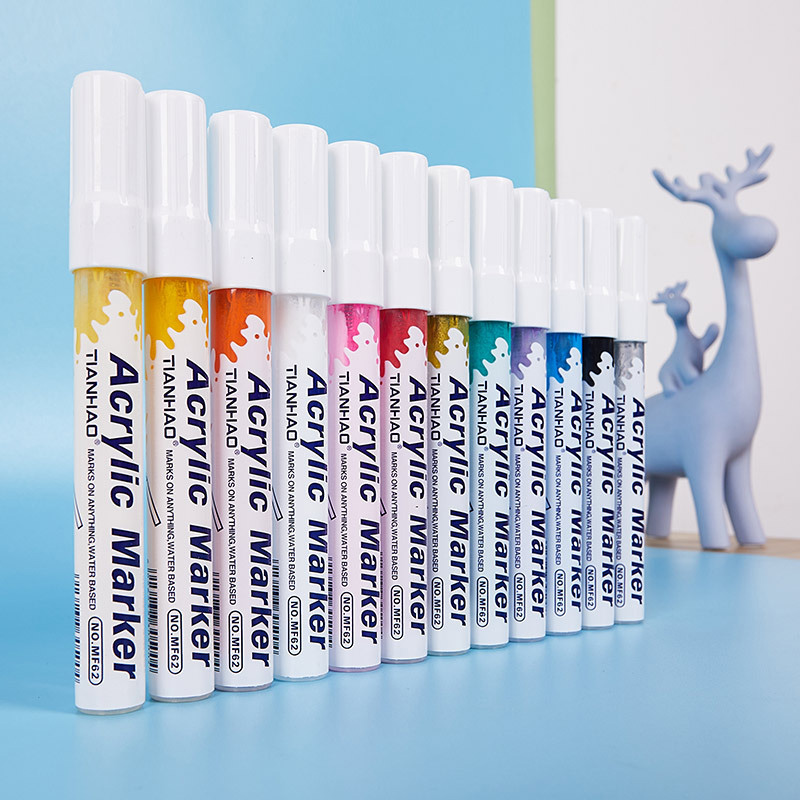In an era increasingly dominated by digital communication tools, the humble multicolor marker pen continues to assert its relevance across educational, professional, and creative landscapes. Far from being confined to the realm of art, these versatile writing instruments have carved out vital roles that extend well beyond simple doodling or drawing. From classrooms to boardrooms, multicolor marker pens are reshaping how we organize information, express ideas, and engage audiences.
Education: Enhancing Learning Through Color
Schools and universities remain among the largest users of multicolor marker pens. Students leverage the spectrum of colors to organize their notes, highlight important concepts, and differentiate categories within complex subjects. Studies have shown that color coding in notes can improve information retention and recall, making multicolor markers invaluable for effective study habits.
Teachers also depend heavily on marker pens, especially in interactive classroom environments. The use of multicolor markers on whiteboards and flipcharts helps to break down information visually, making lessons more dynamic and accessible. “Colors naturally draw attention,” explains Sarah Nguyen, an education consultant. “When teachers use different colors to emphasize key points, it helps students process and remember the material better.”
Additionally, the tactile act of writing with markers, combined with the visual impact of vibrant colors, supports kinesthetic and visual learners who benefit from multisensory engagement during lessons.
Business and Office Applications: Beyond Black Ink
In the corporate world, multicolor marker pens serve several practical functions that enhance workflow and communication. Offices utilize these pens for labeling, annotating documents, brainstorming sessions, and marking whiteboards during presentations. The ability to switch colors quickly during meetings facilitates clarity in conveying ideas and makes group discussions more interactive.

Project managers often use different colors to denote task statuses, deadlines, or team responsibilities on whiteboards or Kanban boards. This color-coding technique streamlines project tracking and aids in preventing miscommunication. For example, red might indicate urgent tasks, green for completed ones, and yellow for tasks in progress.
Moreover, multicolor marker pens are a staple in creative agencies and marketing departments, where they support rapid prototyping, sketching, and visual brainstorming. “Colors help bring ideas to life,” says Marcus Liu, creative director at Bright Ideas Studio. “They add an emotional dimension that black and white text simply can’t achieve.”
Art, Design, and Hobbyist Communities
While their functional roles in education and business are substantial, multicolor marker pens continue to thrive in artistic circles. Their rich pigment, variety of tip sizes, and vibrant hues make them indispensable tools for illustrators, designers, and hobbyists.
Artists use multicolor markers for everything from initial sketches and coloring to final artwork details. The portability and ease of use allow for spontaneous creativity anywhere, whether in a studio or on the go. Popular among bullet journal enthusiasts, planners, and scrapbookers, multicolor marker pens also enable users to personalize and beautify their organization systems.
This crossover between utility and creativity has prompted manufacturers to innovate, offering markers with features such as dual tips (fine and broad), water-based or alcohol-based inks, and ergonomic designs that cater to prolonged use.
Technological Advances Fuel Market Growth
Recent years have seen significant technological advancements in marker pen manufacturing, contributing to increased demand and market expansion. Improved ink formulations have resulted in longer-lasting colors that resist fading and smudging, making markers more reliable for archival-quality work.
Eco-friendly initiatives are also gaining momentum within the industry. brands have introduced refillable marker pens and use sustainable materials to reduce plastic waste. “Consumers today expect environmentally responsible products without sacrificing quality,” notes Jennifer Park, sustainability officer at ColorMark Inc. “We’ve seen a positive reception to refillable markers that maintain vibrant colors while reducing environmental impact.”
Digital integration is another emerging trend. Some marker pens now come with companion apps that allow users to scan and digitize their handwritten notes or drawings, bridging the gap between analog and digital workflows.